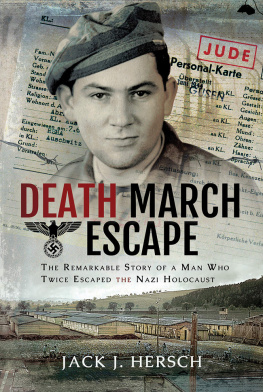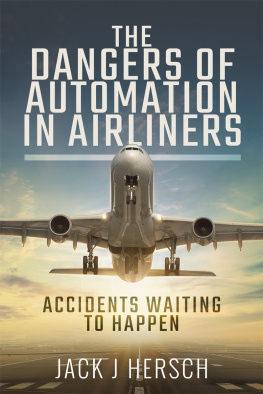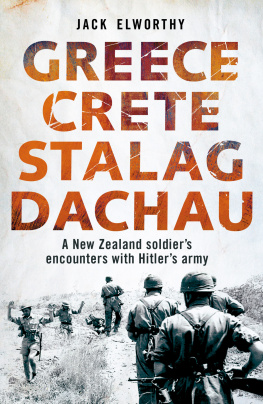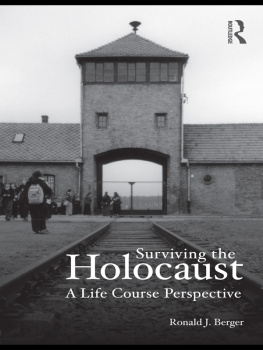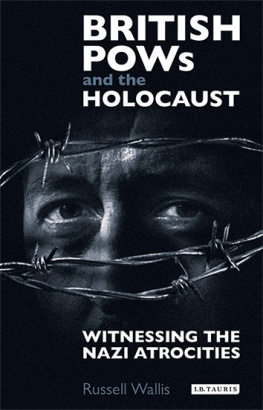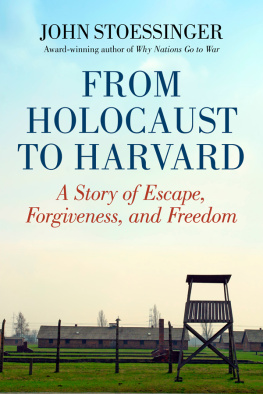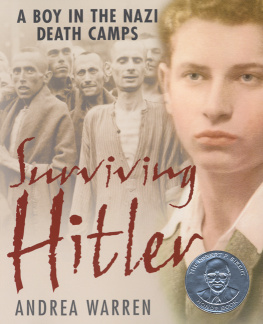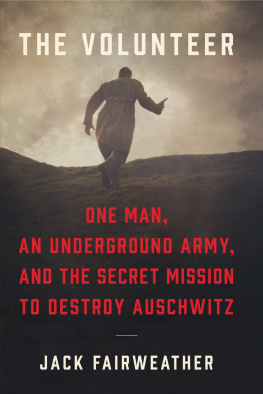Jack J Hersch - Death March Escape: The Remarkable Story of a Man Who Twice Escaped the Nazi Holocaust
Here you can read online Jack J Hersch - Death March Escape: The Remarkable Story of a Man Who Twice Escaped the Nazi Holocaust full text of the book (entire story) in english for free. Download pdf and epub, get meaning, cover and reviews about this ebook. year: 2019, publisher: Frontline Books, genre: History. Description of the work, (preface) as well as reviews are available. Best literature library LitArk.com created for fans of good reading and offers a wide selection of genres:
Romance novel
Science fiction
Adventure
Detective
Science
History
Home and family
Prose
Art
Politics
Computer
Non-fiction
Religion
Business
Children
Humor
Choose a favorite category and find really read worthwhile books. Enjoy immersion in the world of imagination, feel the emotions of the characters or learn something new for yourself, make an fascinating discovery.
- Book:Death March Escape: The Remarkable Story of a Man Who Twice Escaped the Nazi Holocaust
- Author:
- Publisher:Frontline Books
- Genre:
- Year:2019
- Rating:3 / 5
- Favourites:Add to favourites
- Your mark:
- 60
- 1
- 2
- 3
- 4
- 5
Death March Escape: The Remarkable Story of a Man Who Twice Escaped the Nazi Holocaust: summary, description and annotation
We offer to read an annotation, description, summary or preface (depends on what the author of the book "Death March Escape: The Remarkable Story of a Man Who Twice Escaped the Nazi Holocaust" wrote himself). If you haven't found the necessary information about the book — write in the comments, we will try to find it.
Jack J Hersch: author's other books
Who wrote Death March Escape: The Remarkable Story of a Man Who Twice Escaped the Nazi Holocaust? Find out the surname, the name of the author of the book and a list of all author's works by series.
Death March Escape: The Remarkable Story of a Man Who Twice Escaped the Nazi Holocaust — read online for free the complete book (whole text) full work
Below is the text of the book, divided by pages. System saving the place of the last page read, allows you to conveniently read the book "Death March Escape: The Remarkable Story of a Man Who Twice Escaped the Nazi Holocaust" online for free, without having to search again every time where you left off. Put a bookmark, and you can go to the page where you finished reading at any time.
Font size:
Interval:
Bookmark:

DEATH MARCH ESCAPE
THE REMARKABLE STORY of a
MAN WHO TWICE ESCAPED
THE NAZI HOLOCAUST
JACK J. HERSCH

Frontline Books, London

First published in Great Britain in 2018 by
FRONTLINE BOOKS
An imprint of
Pen & Sword Books Ltd
Yorkshire - Philadelphia
Copyright Jack J. Hersch
ISBN 978 1 52674 022 9
eISBN 978 1 52674 023 6
Mobi ISBN 978 1 52674 024 3
The right of Jack J. Hersch to be identified as
Author of this work has been asserted by him in accordance
with the Copyright, Designs and Patents Act 1988.
A CIP catalogue record for this book is
available from the British Library
All rights reserved. No part of this book may be reproduced or transmitted in any form or by any means, electronic or mechanical including photocopying, recording or by any information storage and retrieval system, without permission from the Publisher in writing.
Pen & Sword Books Ltd incorporates the imprints of Pen & Sword
Archaeology, Atlas, Aviation, Battleground, Discovery,
Family History, History, Maritime, Military, Naval, Politics,
Social History, Transport, True Crime, Claymore Press,
Frontline Books, Praetorian Press,
Seaforth Publishing and White Owl
For a complete list of Pen & Sword titles please contact
PEN & SWORD BOOKS LTD
47 Church Street, Barnsley, South Yorkshire, S70 2AS, England
E-mail:
Website: www.pen-and-sword.co.uk
Or
PEN AND SWORD BOOKS 1950
Lawrence Rd, Havertown, PA 19083, USA
E-mail:
Website: www.penandswordbooks.com
The photo of my father that I saw on the KZ Mauthausen website in 2007. (Author)
My father with his brother, Villi, in the rear storage area of their fathers small soap factory in Dej, 1938. (Author)
My father with his sister, Rosie, in an undated photo inside their home. (Author)
My father, second from left, in an undated photo. He is assembled with his Hungarian Labor Service battalion. (Author)
My father and two of his friends in 1942 or 1943, when he was around seventeen. (Author)
My mother. The picture is dated July 30, 1951. (Author)
My mother in 1944, when she was fourteen, with her younger sister, Renee, and their uncle, David Grossman, a medic with the 16th Regiment of the US Armys 1st Division. (Author)
Ignaz Friedmann, in his World War I Austro-Hungarian Army uniform. (Mauthausen Memorial)
Barbara Friedmann, in an undated image.
My fathers Prisoner Personnel Card. (Author)
The photo my fathers siblings mailed him in 1946, during his recuperation in the Kohlbruck Klinik. (Author)
My father among unidentified fellow patients all survivors in the Kohlbruck Klinik in 1945. (Author)
My father in a hospital bed in the Kohlbruck Klinik in Passau, in 1946.
This portrait in camp uniform was taken in 1945, while my father was recuperating in the Kohlbruck Klinik. (Author)
My father on an Israeli beach in an undated photo. (Author)
This is the evening in 1965 when my parents celebrated their purchase of a small stake in a senior citizen home. In exactly twenty years my father had gone from Hitlers Nightmare to the American Dream. (Author)
KZ Mauthausens south wall today. (Author)
Looking through KZ Mauthausens main gate to the Appellplatz (assembly area) as it appears today. (Author)
Looking west into KZ Gusen I, showing the eastern camp wall, and the Appellplatz .
An Allied aerial reconnaissance photograph of KZ Gusen I and Gusen II, taken in 1945.
The stone crusher complex in the Kastenhof quarry.
All that remains today of the stone crusher complex. (Author)
The front of the Jourhaus as it looked during the war. (Bundesarchiv, Bild 192-171/CC-BY-SA 3.0)
The front of the Jourhaus as it looked the day I knocked on the front door. (Author)
A mine wagon of the sort my father loaded and unloaded while working in KZ Gusens Kastenhof granite quarry. (Author)
The intersection where my father escaped the first time, as it appears today. (Author)
The corner building of the Enns town square that housed the Gendarmerie outpost in April 1945. (Author)
The Friedmann home seen from Kristein Strasse . (Author)
The barn my father would have encountered if he had turned left at the Y-intersection after leaving the Friedmann house. (Author)
The exact location of my fathers second escape, as it appeared when I visited. (Author)
The 44 track my father had taken on Saturday night, April 21, 1945, when he got lost. (Author)
This photo was taken ten feet to the right of the photograph above, at the edge of farm fields. The track is visible, pointing back towards the Y-intersection. (Author)
A Google Earth view of Enns, Austria, showing the B1 death march route, and the trees before (east) and after (west) the sugar factory. (Courtesy of Google Earth)
A Google Earth close-up of the Ennser StrasseSteyrer Strasse intersection, the location of my fathers first escape. (Courtesy of Google Earth)
A Google Earth close-up of the Friedmann home and the area where my father got lost. (Courtesy of Google Earth)
General George S. Pattons Third Army route through Europe, beginning August 1, 1944.
One day a few years ago, while at my job working for the Mauthausen Memorial Archives, I received an email from the USA: On your website, in the section death marches, I came across a photograph of my late father in his teens. Can you tell me how your institution came into possession of this photograph?
Following up, I learned the photo was part of a manuscript that had been completed in the 1970s by a local historian, Peter Kammersttter. Kammersttter had conducted interviews with people who lived along the route of the death marches from the Mauthausen Concentration Camp to one of its sub-camps, Gunskirchen, and who still remembered those events of April 1945. One of these people had given Kammersttter a photograph of a young man who had escaped from the march and had been hidden in their house until the end of the war. The young man in the photograph was David Hersch. The sender of the email was his son Jack.
Researching the answer to the question posed in Jacks email, I had the distinct sensation something important was happening; that, like a puzzle, the pieces of a fragmented history were about to be put back together, resulting in something particularly significant. Some days later, I had Jack Hersch on the phone. From two completely different spots in the world thousands of miles apart, two people who apparently had almost nothing in common were talking to each other. Jack, a US citizen, is the son of a Jewish survivor of Mauthausen, a man born in Transylvania, formerly part of the Austro-Hungarian Empire. I, an Austrian, am a descendant of a society that bears responsibility for what Jacks father had to endure. Our origins could hardly be more divergent. But there was one thing we did share: a common history of which both of us only knew tiny pieces, stemming from the stories and investigations of others; a history which we both hadnt experienced ourselves but which, to a large extent, was certainly ours.
Jack continued digging deeper into his fathers history. Now, years later, I have read the complete results of his research in the pages of Death March Escape . This book has given me insight into the thoughts and emotions of the author and I realize that my first, distinct sensation back then was right: the story told in these pages is indeed of enormous importance for Jack, for myself, and especially for the world we live in.
Font size:
Interval:
Bookmark:
Similar books «Death March Escape: The Remarkable Story of a Man Who Twice Escaped the Nazi Holocaust»
Look at similar books to Death March Escape: The Remarkable Story of a Man Who Twice Escaped the Nazi Holocaust. We have selected literature similar in name and meaning in the hope of providing readers with more options to find new, interesting, not yet read works.
Discussion, reviews of the book Death March Escape: The Remarkable Story of a Man Who Twice Escaped the Nazi Holocaust and just readers' own opinions. Leave your comments, write what you think about the work, its meaning or the main characters. Specify what exactly you liked and what you didn't like, and why you think so.

